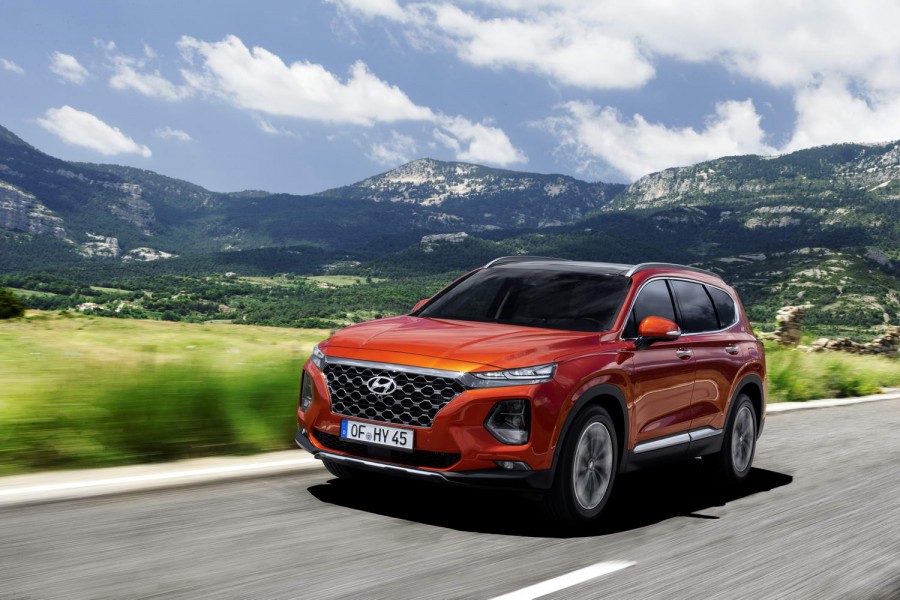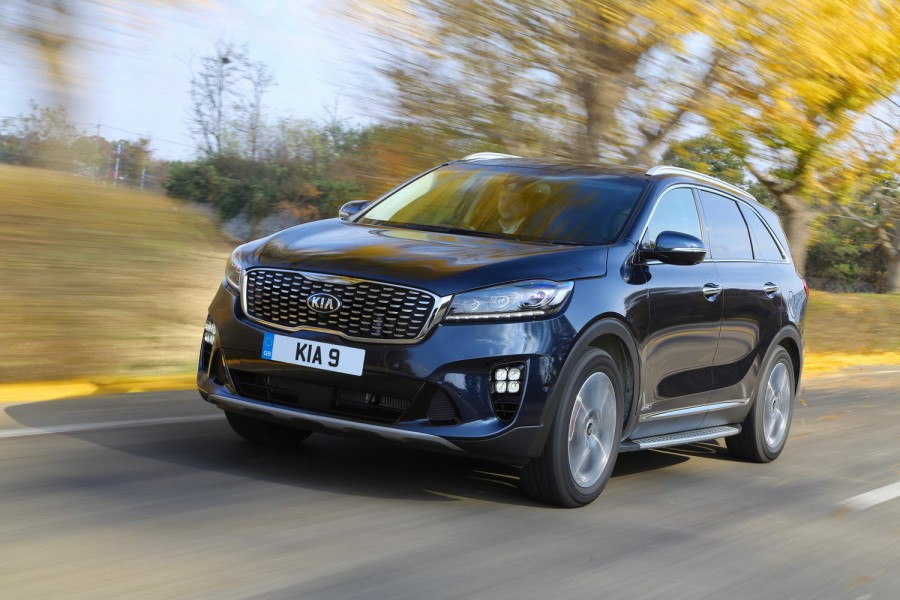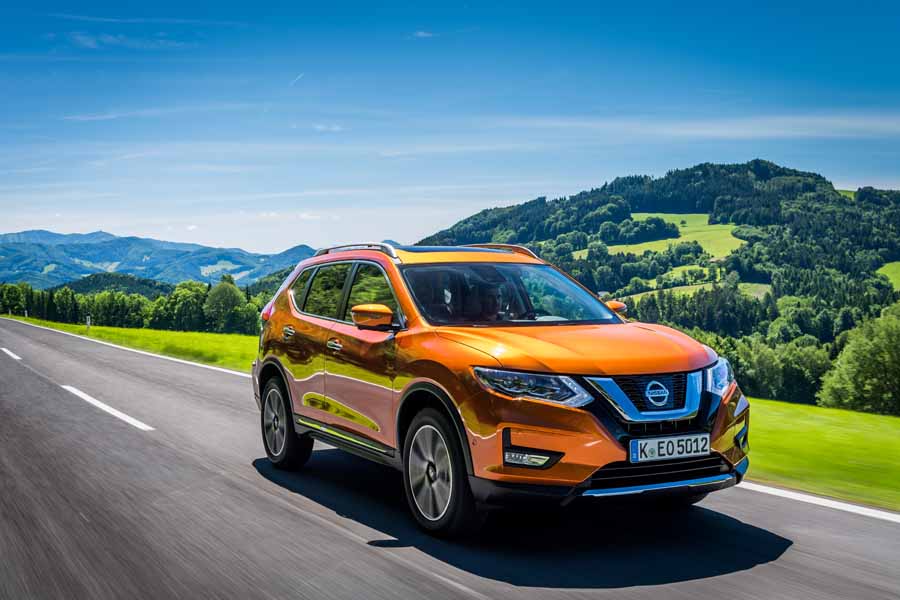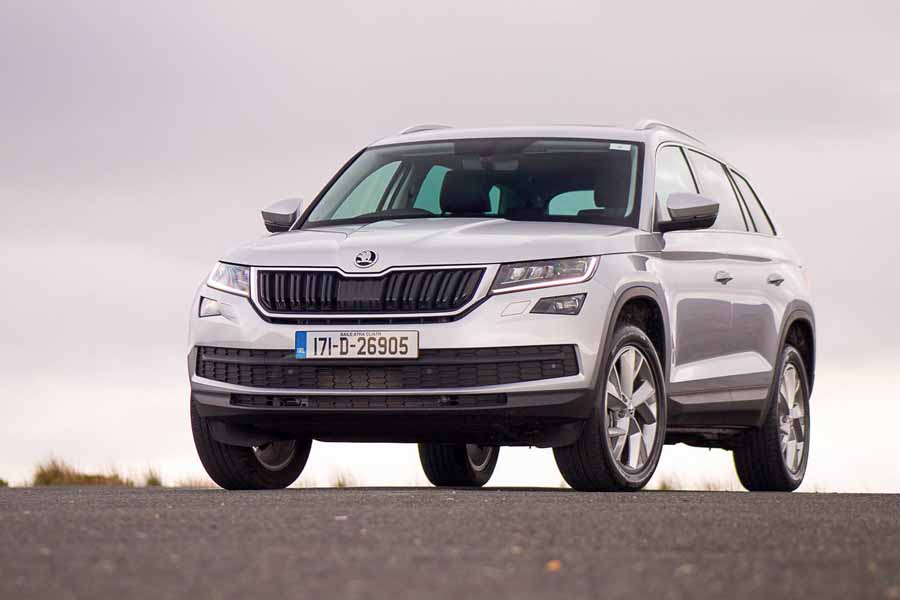One of our preferred seven-seat SUVs, the Hyundai Santa Fe, morphs into its fourth iteration, and the resulting machine is superb to look at, has an excellent cabin and improved driving manners over its predecessor. Therefore, what's not to like?
In the metal
Striking styling is the order of the day for the all-new Hyundai Santa Fe - and it really works. This is not one of those SUVs that you can accuse of being bland; nor is it as overtly fussy and demanding of attention as the company's own smaller crossover, the Kona. The Santa Fe takes some inspiration from that model, though, such as the narrow Composite Light upper lamps with a larger cluster of lamps and detailing below, plus the new Cascading Grille that is Hyundai's signature, but the Santa Fe wears these features so well. It's a truly handsome thing, no doubt about it and, brilliantly, it doesn't look massive and hulking as you approach it, despite the Santa Fe measuring almost 4.8 metres tip to tail.
Step inside and it's further good news, as this is one of Hyundai's best cabins yet. A higher-spec model like our test car gains all the necessary eye-catching gewgaws, like the digital instrument cluster and the largest infotainment screen, but there's a pleasing solidity to the way everything is put together and some nice architectural features too, such as that scalloped top to the passenger-side dashboard that sweeps around from the centre console and into the door cards. The seating position is good, there's loads of space on board, the quality of materials used is high and in general, the Santa Fe feels like a truly premium place to spend some time. Aesthetically, we're big fans of this latest-generation Hyundai SUV flagship.
Driving it
Hyundai has retained the old 2.2-litre CRDi diesel engine with 200hp and 440Nm (albeit it is cleaner now, with the addition of Selective Catalytic Reduction and a Lean NOx Trap), but the company has made some mechanical changes elsewhere to improve the refinement. A new eight-speed automatic comes in as the self-shifting alternative to the six-speed manual, while four-wheel-drive models gain an all-new HTRAC torque-distributing set-up that allows the driver control of where they want the torque to be split. This is linked to the drive modes, so in Eco the Santa Fe will send anything between 80 and 100 per cent of torque to the front axle, the remainder heading to the rear, while in Comfort that switches from a 65 to 80 per cent front bias. Sport mode can see a 50:50 split front to back, with up to a maximum of 65 per cent of torque heading forwards.
Hyundai also claims it has improved the Santa Fe's ride comfort and refinement, with suspension that has been stiffened (which seems counter-intuitive, but bear with us...) and placed vertically, utilising external shock absorbers as part of the set-up. The diesel engine has also been muted by 4dB with a revised piston design and there's a wad of extra sound-deadening in the carpet, as well as a reinforced floor panel to muffle road noise.
And all of this works. Beautifully, we might add. The Santa Fe is a delight to drive for a large SUV like this, with exemplary manners at anything below 3,000rpm. It ghosts along roads with a level of ride comfort that is wonderfully controlled, while every major interface feels solid and well-judged - the steering is nice and accurate, without being terrifically heavy or fidgety, the brakes bite cleanly and strongly, the 440Nm engine burrs away discreetly as it hauls nigh-on two tonnes of Korean goodness with disdainful ease. Praise, too, for the new eight-speed auto, which is the very definition of the word 'slick', unless you're using the paddle shifts, when it becomes a tiny bit recalcitrant.
Furthermore, despite its physical size, the Santa Fe is no leaning mess in the corners. It'll never light the keener driver's fire, thanks to a lack of feel from the otherwise pleasant steering and a slight tackiness to the wheel just off-centre in Sport mode, but it's a lot more capable than you might give it credit for, and far more composed than the previous Santa Fe. Body control is good, with an acceptable amount of lean and squidge, while the Hyundai will pull off quick direction changes without feeling like the shell is getting away from the chassis. And the 2.2-litre engine seems like it is happy to rev out, although it becomes a trifle noisier as it homes in on its 4,500rpm redline; mind you, all four-cylinder turbodiesels are like this and the Hyundai's unit does at least stay vibration-free when extended. In short, the new Santa Fe is a very amenable big SUV to drive, no matter what sort of road you're on.
What you get for your money
Hyundai Ireland is offering just a single 2.2-litre diesel engine, which is available in a five-model line-up, starting at €41,995 and rising to €57,495, with monthly PCP from €435. The base model is the 2WD Comfort Plus, with the other 2WD variant - the Executive Plus - another €2,000 above that. A further €2,000 again sees you in the Executive Plus with 4WD and the manual gearbox, while switching to the automatic version of the same Santa Fe requires another €4,000 and a basic price tag of €49,995. The top-priced Santa Fe is the Premium Plus 4WD automatic.
Those prices make it more expensive than the likes of the Nissan X-Trail and Skoda Kodiaq, but that's because those two rivals have smaller engines at their entry points. In similar spec, the Nissan and Skoda would be much more like the Hyundai's price - and the Santa Fe is also good value when held up to the Land Rover Discovery Sport. Like any new Hyundai, the big SUV comes with the company's superb five-year, unlimited-mileage warranty.
All Mk4 Santa Fes come fitted with at least 17-inch alloy wheels, roof rails, climate control, a heated leather steering wheel, a leather gear knob, LED daytime running lights, auto lights and wipers, electric windows all round, rear parking sensors, Drive Mode Select, Bluetooth, aux-in and USB connections and a good level of safety kit that includes Autonomous Emergency Braking, Driver Fatigue Detection, Lane Keep Assist System (LKAS), six airbags and cruise control. Step up to Executive Plus and luxuries like 18-inch alloys, leather upholstery, an electric parking brake, sun/privacy glass, heated seats in the front and the outer two chairs of the second row, LED rear lights, rear air conditioning, front parking sensors, Android Auto and Apple CarPlay on a seven-inch touchscreen and a Qi wireless smartphone charging plate are all loaded in.
The top-end Premium Plus has everything you could want or need on a family SUV like this - 19-inch alloys, a seven-inch TFT supervision cluster for the driver, LED headlights, a panoramic sunroof, the Around View Monitor 360-degree camera, a head-up display and full satnav on an eight-inch touchscreen are part of the standard offering. It also gets an enhanced safety package, with Advanced Smart Cruise Control and Blind Spot Warning, plus a Smart Key for easier entry/egress and start-up.
Summary
If we had any complaints about the outgoing Mk3 Hyundai Santa Fe, they revolved around its slightly lacklustre cabin finishing, its so-so chassis and the fact the SUV missed the final degree of rolling refinement. This time around, Hyundai has addressed those things in emphatic fashion, which means one of our favourite seven-seat SUVs has just become quite a bit more desirable than ever before.




















































